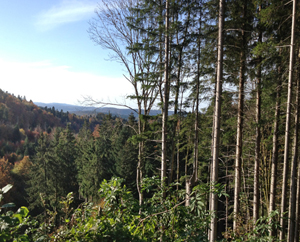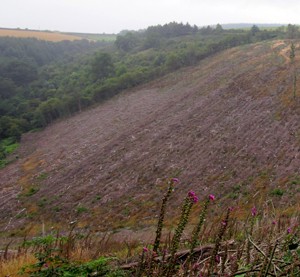Sink or source?

Forests across Europe occupy some 40% of the land area, and until recently they were regarded as not only a source of timber but also an important ’sink’ of carbon. That is to say, they took in more carbon dioxide in photosynthesis (and stored it away in complex organic compounds) than they released in respiration.
However, in recent times, these important biomes have turned from carbon sink to carbon source. This year, the Finnish forests changed from sink to source. Forests in the Czech Republic and Germany also released more carbon than they absorbed. Though French forests are still a sink, their absorption of carbon dioxide has roughly halved in recent years (from 74 million tonnes of CO2 to 37.8 million tonnes in 2022). Norway has seen a similar reduction in carbon dioxide storage from 32 million tonnes to 18 million tonnes.
Seemingly, forests across the continent are losing the ability to act as carbon sinks, but why? One reason seems to be the increased harvesting of timber, many forests are privately owned and run on a commercial basis. The Russian invasion of Ukraine has been a factor as sanctions against Russian timber has lead to more ‘domestic’ culling, for example in Finland. However, climate change is an important factor in this downturn. In recent times, droughts (in 2018 and 2022) have had a significant effect of forests, trees are stressed and the effects of drought have been greater than anticipated. Drought can also be coupled with other extreme weather events (such as storm damage) and outbreaks of bark beetle (which have particularly affected spruce woodlands). The Czech Republic has reported several outbreaks of bark beetle in recent times.
 What can be done to mitigate this loss of carbon sinks?
What can be done to mitigate this loss of carbon sinks?
Clearly reducing the harvesting of trees for timber and the banning of clear felling would help. After a clear cut in a boreal or temperate region, it can take a forest 10 to 15 years to become a sink again, and even longer for the original emissions associated with the clear cut to be compensated for.
Increasing the diversity and resilience of trees used in forestry is another approach to increasing CO2 absorption, however, it would take some time to determine which trees would be most effective in creating a carbon sink in the face of climate change. Sadly, it is also the case that many tropical forests are in decline in terms of carbon storage due to deforestation, expansion of agriculture and fires.
Further reading : https://forest.eea.europa.eu/topics/forest-and-climate/carbon-sinks-and-sources
Comments are closed for this post.
